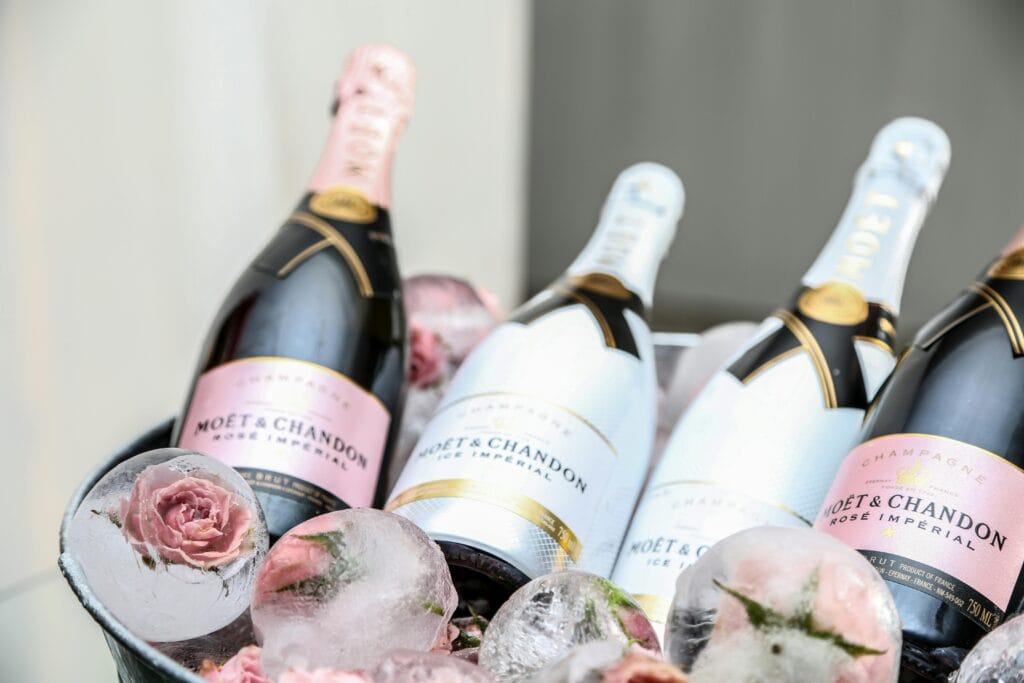Wine culture is vast, rich, and full of surprises. Among the many styles of wine, fortified wine and sparkling wine stand out—not just for their bold flavors, but for how they’re made, served, and enjoyed. Whether you’re sipping a glass of bubbly at a celebration or a velvety port after dinner, knowing the difference between these two wine types can elevate your wine knowledge and palate.
Let’s uncork the essentials and explore what really sets fortified wine apart from sparkling wine.
🥂 What Is Sparkling Wine?
Sparkling wine is best known for its effervescent bubbles, created by carbon dioxide either naturally through fermentation or injected artificially. While Champagne is the most famous type, sparkling wine comes from many regions and goes by different names:
-
Champagne (France – only from the Champagne region)
-
Prosecco (Italy)
-
Cava (Spain)
-
Crémant (France, outside Champagne)
-
Sparkling Rosé and Sparkling Red Wines (varied regions)
✅ Key Characteristics:
-
Carbonation: Fine or vigorous bubbles.
-
Lower Alcohol: Typically 11–12.5% ABV.
-
Taste: Ranges from bone dry (Brut Nature) to sweet (Doux).
-
Serving Temp: 6–10°C (well chilled).
-
Occasion: Celebratory, aperitifs, brunches, desserts.
🍷 What Is Fortified Wine?
Fortified wine is a still wine with a distilled spirit (usually grape brandy) added to it, increasing alcohol content and shelf life. This process was historically used to preserve wine during long sea voyages.
Famous fortified wines include:
-
Port (Portugal)
-
Sherry (Spain)
-
Madeira (Portugal)
-
Marsala (Italy)
-
Vermouth (Used in cocktails)
✅ Key Characteristics:
-
Alcohol Content: Higher than regular wines (16–20% ABV).
-
Sweet or Dry: Can be rich and sweet (like Tawny Port) or dry and nutty (like Fino Sherry).
-
Aging Potential: Often aged for years; some develop nutty, oxidized flavors.
-
Serving Temp: Usually served slightly chilled or at room temperature depending on type.
🍇 How They’re Made: A Peek Into the Process
⚗️ Sparkling Wine: Two Fermentations
-
Primary Fermentation: Like still wine.
-
Secondary Fermentation: Either in bottle (traditional method) or tank (Charmat method), which produces the bubbles.
Traditional Method (used for Champagne): Time-intensive, with complex flavors like toast, brioche, and citrus.
Tank Method (used for Prosecco): Lighter, fruitier wines with pear, apple, and floral notes.
🛢️ Fortified Wine: Fortification with Brandy
During or after fermentation, grape brandy is added:
-
During fermentation = Stops fermentation = Sweeter wine (e.g., Port).
-
After fermentation = Dryer wine (e.g., Sherry).
The process also involves oxidative aging or solera systems to add complexity.
🔍 Side-by-Side Comparison
| Feature | Sparkling Wine | Fortified Wine |
|---|---|---|
| Alcohol Content | 11–12.5% | 16–20% |
| Texture | Bubbly / Fizzy | Still / Rich / Sometimes syrupy |
| Sweetness Range | Brut Nature to Doux | Bone dry to very sweet |
| Occasions | Toasts, Brunch, Parties | Aperitifs, Digestifs, Cooking |
| Common Regions | France, Italy, Spain | Portugal, Spain, Italy |
| Glassware | Flute or Coupe | Port or Sherry glass |
| Storage Once Opened | 1–3 days (loses fizz) | 1–4 weeks (depending on type) |
🍽️ Food Pairing Tips
🥂 Sparkling Wine Pairings:
-
Brut Champagne: Oysters, sushi, potato chips
-
Prosecco: Prosciutto, melon, light pasta
-
Sparkling Rosé: Smoked salmon, berries, goat cheese
-
Cava: Tapas, fried foods, Manchego cheese
🍷 Fortified Wine Pairings:
-
Port: Blue cheese, dark chocolate, walnuts
-
Sherry (Fino): Olives, nuts, fried fish
-
Sherry (Oloroso): Game meat, mushroom dishes
-
Madeira: Roasted nuts, fruitcake, spicy dishes
🌍 Cultural & Regional Identity
Sparkling wines are celebration icons across cultures—whether it’s a wedding toast or a New Year’s countdown. Each country has its bubbly pride, from France’s Champagne to Italy’s Prosecco.
Fortified wines, on the other hand, carry deep historical roots. Sherry has long been linked with Spanish tapas culture, while Port represents centuries of wine trade in Portugal’s Douro Valley.
💡 When to Choose What?
| Situation | Go Sparkling 🍾 | Go Fortified 🍷 |
|---|---|---|
| Celebrating a milestone | Champagne or Cava | Not the best choice |
| After-dinner sipping | Not ideal | Tawny Port or Sherry |
| Light seafood brunch | Prosecco or Sparkling Rosé | Too heavy |
| Rich desserts or cheese platter | Maybe Moscato d’Asti | Port or Madeira |
| Cocktail mixing | French 75, Mimosa | Vermouth, Dry Sherry |
📝 Final Thoughts: Two Distinct Experiences
Fortified and sparkling wines offer two completely different experiences. While sparkling wines are crisp, lively, and often celebratory, fortified wines are deep, warming, and contemplative—meant to be sipped slowly.
If you’re planning a wine tasting night or exploring new wine styles, why not try both? You’ll develop a deeper appreciation for the craft behind each glass and expand your wine vocabulary.
Whether you’re pouring a glass of bubbly to toast a success or winding down with a sweet Port and blue cheese—each has a story to tell.





